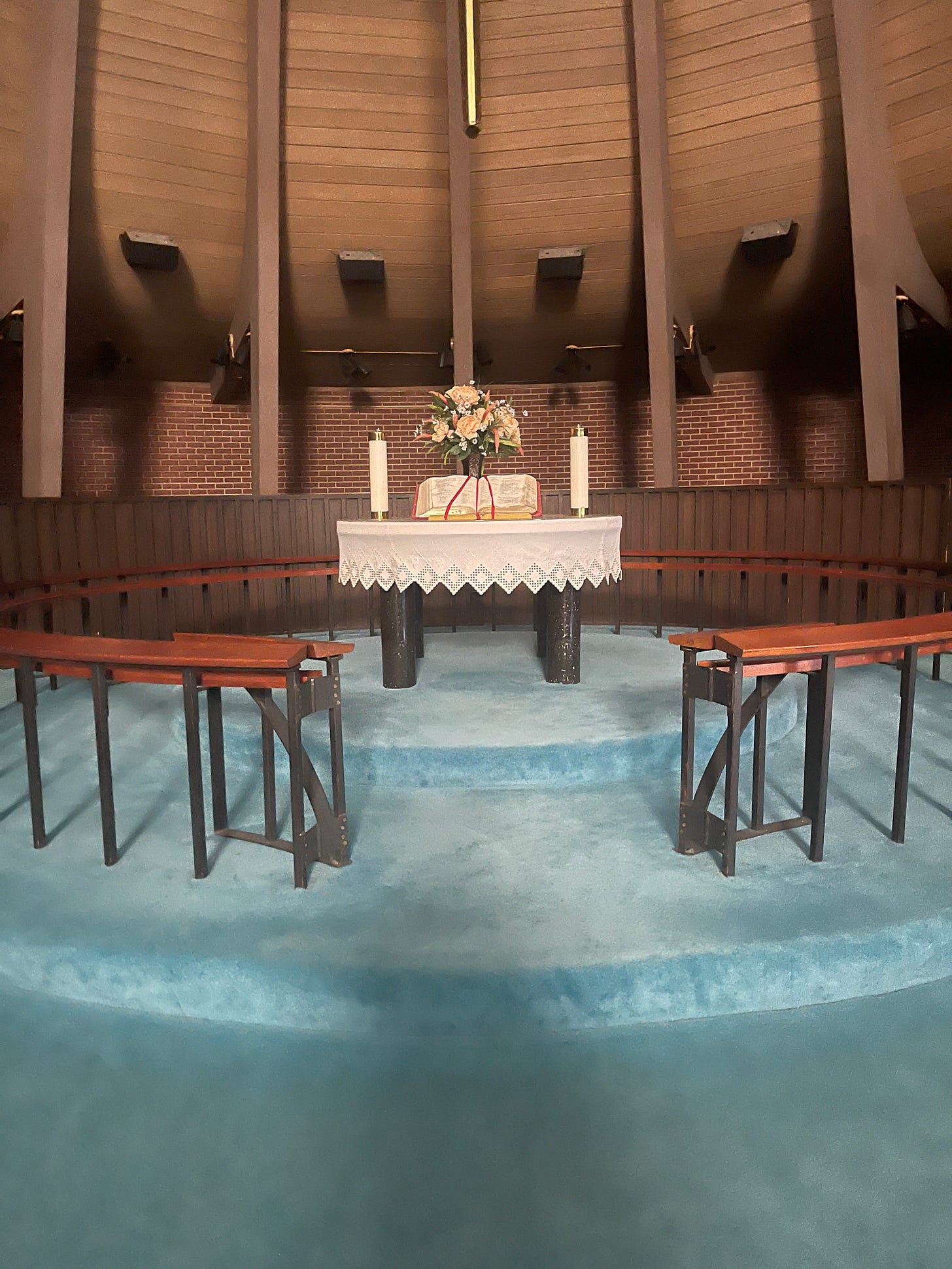Can you imagine giving a presentation on healthy eating in the middle of a candy shop?
What about leading an exercise clinic in a mattress store?
Or, better yet, promoting a new music listening technology in the midst of an old record store?
Seems a little contradictory at best, or hypocritical at worst, right?
What if I told you this is what most mainline pastors are trying to do, each and every Sunday?
This past weekend, I attended a clergy workshop at Grace United Methodist Church in Denver.
Grace UMC is a big, triumphant midcentury-modern architectural church with an older and simpler sanctuary built in 1954 and a bigger, grander sanctuary built across the courtyard only 9 years later in 1963.
While the smaller and older sanctuary (now the fellowship hall) is a simple wooden A-frame construction with some stained-glass features, the more recent sanctuary really reflects (IMO) the more grander and triumphalist tones of mainline protestantism during the post-war boom years.
Two things in particular struck me about the sanctuary. First, the very high ceilings, which draw the eye upward. Second, the chancel which has a kneeling rails encircling the communion table.
Before I continue, my thinking on church architecture has been most influenced by Diana Butler Bass, from whom I attended a lecture for which this topic was discussed.
And, more so, I am a self-confessed church nerd who loves churches and the stories behind them.
So, with this church in particular, two things immediately stand out which seemingly contradict the message the church and the pastor are trying to proclaim.
First, the high, tall ceilings which draw the eye “heavenward,” stand in contrast to the more recent progressive Christian ethics of a more “this-worldly” faith. Butler Bass talks about the former vertical emphasis in Christianity to today’s more “horizontal” focus. Meaning, in most mainline and even evangelical spaces, we understand Christianity as being about how we treat one another and the world we live in.
Second, the kneeling rails, while I imagine are meant to emphasize reverence and piety, look to the unfamiliar and uninitiated like a gate or fence. Quite literally, the communion table looks like it has a fence around it which only certain people (clergy) can go into. With so much of Christianity today emphasizing the inclusive, welcoming nature of God, walking in and seeing what looks like a fence around the communion table is a bit disconcerting!
And, this is the point that I’m getting at. For most mainline protestant pastors, it’s not simply that we’re trying to lead older, aging congregations and institutions with declining resources and a resistance to innovative methods. It’s not simply that we’re trying to proclaim a counter-cultural message.
It’s that we’re trying to do all of this in buildings which are often directly in contradiction to the values and beliefs we’re trying to proclaim.
We proclaim inclusion, but our buildings are not ADA accessible.
We proclaim creation-care, in extremely inefficient buildings.
We proclaim taking our faith beyond the walls of the church in buildings that look like fortresses.
It’s no wonder so many of our mainline churches are struggling.
And it really leads me to wonder, would we be better off letting go of these legacy properties and instead, “starting over” in another space?
Mainliners tend to want to sell buildings when they become too cost-prohibitive to maintain.
What if I told you the biggest drain on your church by your building wasn’t your budget but rather the message it itself proclaims?
(For a positive example of what can happen when a church lets go of an old building and moves into a new space, see Connection Christian Church in Texas.)







